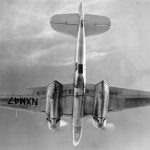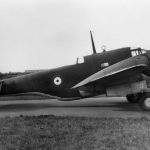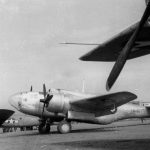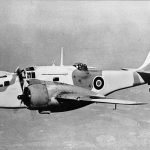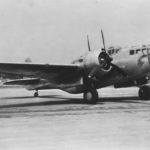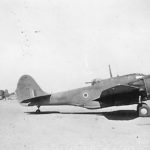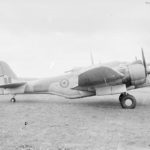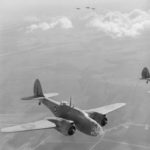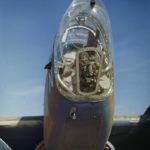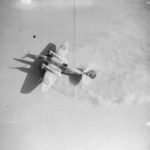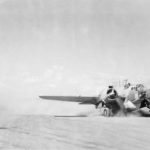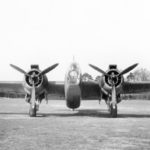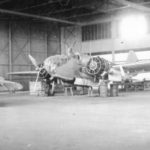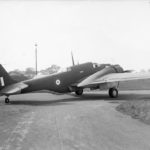Martin Baltimore NXM47
Martin Baltimore IV FA4655
Baltimore IIIA FA201
Martin Baltimore AG688
Baltimore V Bari 1945
Baltimore Malta 1943
Baltimore prototype in flight
Mk. IIIA FA342 “P” Sicily
Baltimore IV of No. 223 Squadron RAF Foggia 43
Baltimore IIIA FA204, USA
armorers loading bombs on Baltimore
Baltimore A-30 1941
Martin A-30 AG954
1st Martin Baltimore Mk I NXM43 tested at Martin Co. Field, 15 June 1941
Baltimore Mk IIIA FA153 North Africa 1943
USAAF ferry crew with Baltimore Mk V
Baltimore Mk III AG837 at Boscombe Down
Baltimores Mk IV of No. 223 Squadron RAF at Luqa, Malta
Baltimores from 55 Squadron RAF over El Alamein 1942
Baltimore Mk II AG781 “B” of No. 55 Squadron RAF 1942
Baltimore Mk IV FA539 at Eastleigh
Air gunner of No 454 Squadron RAAF atop Baltimore Mk III
Baltimores en route to Pantelleria 1943
Baltimore Mk IV FA591 “H” of No. 223 Squadron RAF 1943
Baltimore Mk IV FA463 “U” of No. 223 Squadron RAF at Celone Italy
Crashed Baltimore B Mk I AG703
Baltimores Mk III of RAF 232 Wing and B-25s
Baltimore “Fiorellino” nose art, Italy
Baltimore GR of No, 454 Squadron RAAF Benghazi 1943
Close-Up shot of Baltimore nose, 223 Squadron RAF
Baltimore Mk II takes off for raid in Western Desert, 232 Wing RAF
Baltimore Italy 2
Baltimores mix in with B-25s of the 12th Bomb Group 2
Baltimore Mk II of 232 Wing RAF North Africa
Baltimore Mk IV with long-range fuel tank, Accra
Baltimores mix in with B-25s of the 12th Bomb Group, 1943
Baltimore Mk I AG697 flying past Kasfareet 1942
Martin A-30
Armourers of No. 454 Squadron RAAF at work on Baltimore Mk III
Baltimore Mk V FW605 in flight
Baltimore Mk IIIA FA353 “X” of No. 69 Squadron RAF at Luqa, Malta
Baltimores Tunisia 1943
Mk V FW554 “M” of No. 70 Operational Training Unit RAF
Baltimore front view
Baltimore Mk II AG793 “N” of No. 55 Squadron RAF 1942
Baltimore take off 2
Martin A-30 Baltimore
Baltimore Mk I AG688 at Burtonwood Repair Depot
Baltimores Mk IV of No. 223 Squadron RAF February 1943
Baltimore over target
Baltimore of No. 454 Squadron RAAF Italy 1944
Baltimore Mk IV 1944
Baltimore was a two-engined attack-bomber built by the Glenn L. Martin Company in the United States. To enable the aircraft to be supplied to the British under the Lend-Lease Act the USAAF designation A-30 was allocated. It was not used in combat by the United States forces, but saw service with the British, Canadian, Australian, South African, Hellenic and the Italian air forces.
In early 1940, based on the Martin 167 Maryland bombwe, the Glenn L. Martin Company began work on an improved version, the Model 187, which was to be powered by Wright R-3350-11 engines. The designers calculated its speed to be as high as 608 km/h. The US Army Air Force placed an order for a prototype, designated XA-23, but cancelled it before construction could begin. The Air Ministry set its own requirements based on the experience of the war. Work on the XA-23 was abandoned and the project was completed in accordance with British wishes. In May 1940, Glenn L. Martin Co. was contracted to deliver 400 examples of the new aircraft, which was given the name Baltimore.
Overloading the factory’s design team with work on other projects seriously delayed work on the aircraft. The prototype was supposed to take off at the beginning of 1941, but in reality it was flown on 14.06.1941. While retaining the general construction layout of the Model 167, the aircraft differed from it by having a deeper fuselage, Wright R-2600-19(A5B) engines, self-sealing fuel tanks, and light armoring of the crew positions. Technical problems meant that serial aircraft deliveries did not begin until October. In order to avoid further delays, the first aircraft had no turrets. The Mk.I (50 examples) and Mk.II (100 examples) were equipped with Wright GR-2600-19 engines. Mk.I aircraft were mainly sent to Operational Training Units, while Mk.II to combat squadrons. By the end of 1941, 146 Mk.I aircraft had reached the United Kingdom. The main part of the first order (250 units) was the Mk.III, which were fitted with Boulton Paul dorsal turrets with four British-made 7.69 mm Browning machineguns. Forty-one of these were lost in transit across the Atlantic. The last aircraft produced under the first order left the Glenn L. Martin Co. works in June 1942.
In 1941, the company was awarded another contract for 575 aircraft, but this time not directly from the British, but as part of the Lend-Lease agreement with the US government (thus received the American designation A-30 and the British Mk.IIIA). In September 1942, 600 more were ordered. Both contracts were fulfilled in full. The British received 281 copies of the Mk. IIIA (deliveries began in August 1942) and 294 copies of the Mk. IV version, which differed from the Mk. III in the type of dorsal turret. Instead of the Boulton-Paul product, they received electrically rotating Martin turrets with two Browning 12.7 mm cal. The lower rear MG was abandoned, hence the Mk.IIIA/IV crews usually flew in a three-man crew complement. The third order for 600 aircrafts was for the American A-30A and British Mk.V versions, which differed from their predecessors in that all the guns had 12.7 mm calibre and the Wright GR-2600-29 engines with greater power, thanks to which they developed greater speed. The first Mk.Vs left the Martin works in December 1942, but larger deliveries did not begin until July 1943.
The GR VI version (A-30C), intended for the British Air Force Coastal Command and equipped for patrol flights, remained only as two prototypes, built in late 1943. Martin’s proposals from 1942-1943 for a version with an elongated fuselage to accommodate additional torpedo and fuel tanks, an assault version with a solid nose to accommodate the powerful gunfire armament, and a long-range fighter version remained as drafts. Production was completed in May 1944, after 1575 examples had been built.
Many users were impressed with the change the Baltimore represented from older aircraft such as the Bristol Blenheim. Users praised the aircraft for its heavy armament, structural strength, manoeuvrability, bombing accuracy, and relatively high performance, but crews complained of cramped conditions similar to those of the earlier Maryland bomber. The narrow fuselage made it almost impossible for crew members to change position during flight in case of injury (the interior structure meant that the pilot and observer were separated from the radio operator and rear gunner). This was the case with most light bombers of the time such as the Handley Page Hampden, Douglas Boston, and Blenheim. Crews also complained about the difficulty of controlling the aircraft on the ground. On take-off, the pilot had to coordinate the controls perfectly to avoid a crash. The majority of the accidents were during the take-off and landing phases due to the aircraft’s relatively high wing loading, high approach speed and a directional stability problem during take-offs.
Bombers suffered massive losses when used as a low-level attack aircraft, especially in the chaos of the desert war where most missions were unescorted. However, operating at medium altitude with a fighter escort, the Baltimore had a very low loss rate, with the majority of losses coming from operational accidents.
Undertaking a variety of missions in the Middle East, Mediterranean and European theatres, the Baltimore’s role included reconnaissance, target towing, maritime patrol, intruder and it even served as a very uncomfortable fast transport. Used in anti-submarine role during the war, the Baltimore had moderate success, sinking up to eight submarines. The RAF also supplied aircraft to other Allies in the MTO.
General Specifications
- Type: Twin-engined light bomber and general reconnaissance monoplane.
Wings
- Configuration: Mid-wing cantilever monoplane with four sections—two inner and two outer sections with detachable tips.
- Structure: All-metal with smooth stressed-skin covering.
- Flaps: Hydraulically-operated split flaps located between the ailerons and fuselage.
Fuselage
- Structure: All-metal monocoque with a very deep forward section and a tapering underside aft of the wing, designed to accommodate a rear-firing gun position.
Tail Unit
- Configuration: Cantilever monoplane type with the fin built integral with the fuselage.
- Materials: All-metal framework with metal-covered fixed surfaces and fabric-covered rudder and elevators. Control surfaces include trimming tabs and are aerodynamically and statically balanced.
Landing Gear
- Type: Retractable main landing gear with the main wheels retracting into engine nacelles. Hinged doors close the apertures when the gear is fully retracted. The tail-wheel is non-retractable.
- Operation: Hydraulic retraction system.
Power Plant
- Engines: Two Wright Cyclone GR-2600-A5B5 fourteen-cylinder radial air-cooled engines with two-speed superchargers.
- Power Output: 1,600 hp at 2,200 ft (670 m) and 1,400 hp at 10,800 ft (3,295 m).
- Propellers: Three-bladed Hamilton-Standard constant-speed airscrews, 12 ft. 1 in. (3.6 m) in diameter.
- Fuel Capacity: Self-sealing Mareng fuel cells with a total capacity of 507 Imperial gallons. A long-range reserve tank with an additional 800 Imperial gallons can be carried in the bomb-bay.
Accommodation
- Crew: Four, including a pilot, navigator/bombardier, radio-operator, and rear-gunner. All crew positions are armored.
Armament
- Machine Guns: Total of seven 50 cal. machine guns:
- Four mounted in the wings for forward firing.
- Two in a Martin power-operated turret on top of the fuselage over the trailing edge of the wing.
- One on a flexible mounting in a break in the underside of the fuselage.
- Bomb Load: Internal stowage for up to 2,000 lbs. (908 kg) of bombs.
Dimensions
- Span: 61 ft. 4 in. (18.7 m)
- Length: 48 ft. 6 in. (14.8 m)
- Height: 14 ft. 2 in. (4.32 m)
- Wing Area: 538.5 sq. ft. (50 sq. m)
Weight
- Loaded Weight: Approximately 24,000 lbs. (10,900 kg)
Performance
- Maximum Speed: 305 mph (488 km/h) at 11,600 ft (3,540 m)
Serials
Mk.I: AG685-AG734
Mk.II: AG735-AG834
Mk.III: AG835-AG999, AH100-AH184
Mk.IIIA: FA100-FA380
Mk.IV: FA381-FA674
Mk.V: FW281-FW880
